Trying to identify the hummingbird zipping around your yard?
Hummingbirds are one of the most fascinating creatures that you can find in your backyard. It really helps to know what species of hummingbirds live in Georgia.
While the list below contains all the usual hummingbirds found in Georgia, it’s possible to find a vagrant species of hummingbird that’s not native to Georgia. This is rare but not unheard of.
The following legend can be used for each hummingbird species map to determine what time of year you can see each hummingbird in your area.
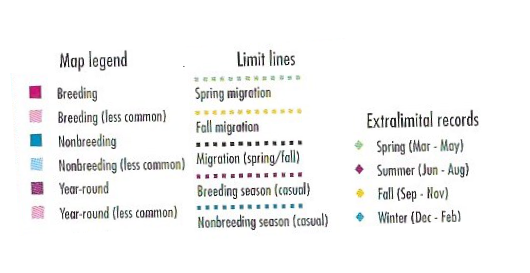
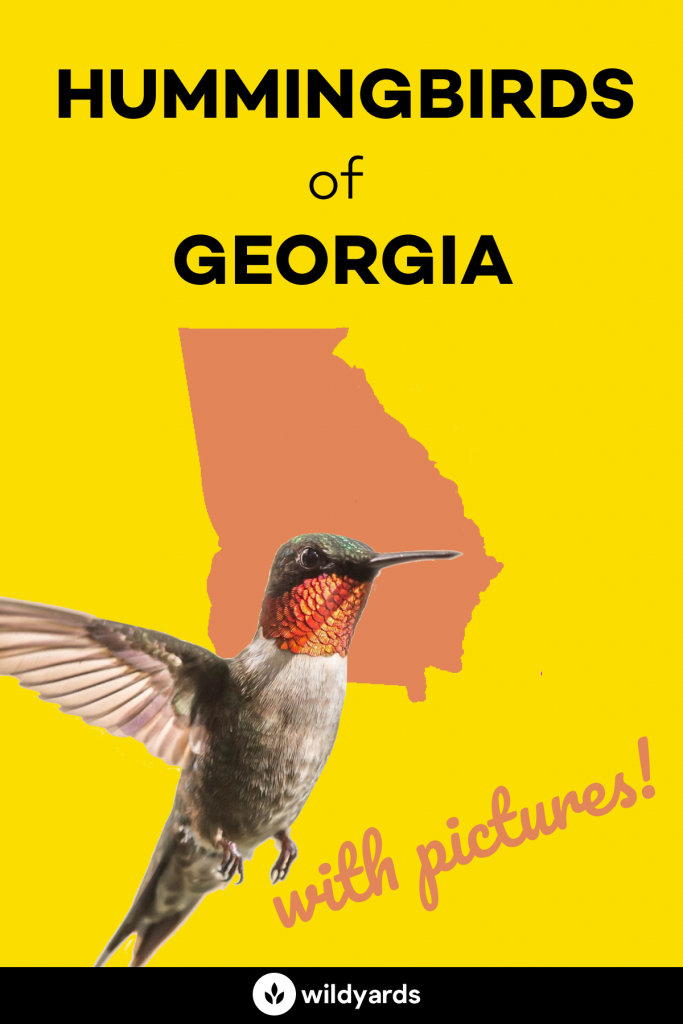
The 9 Hummingbird Species of Georgia
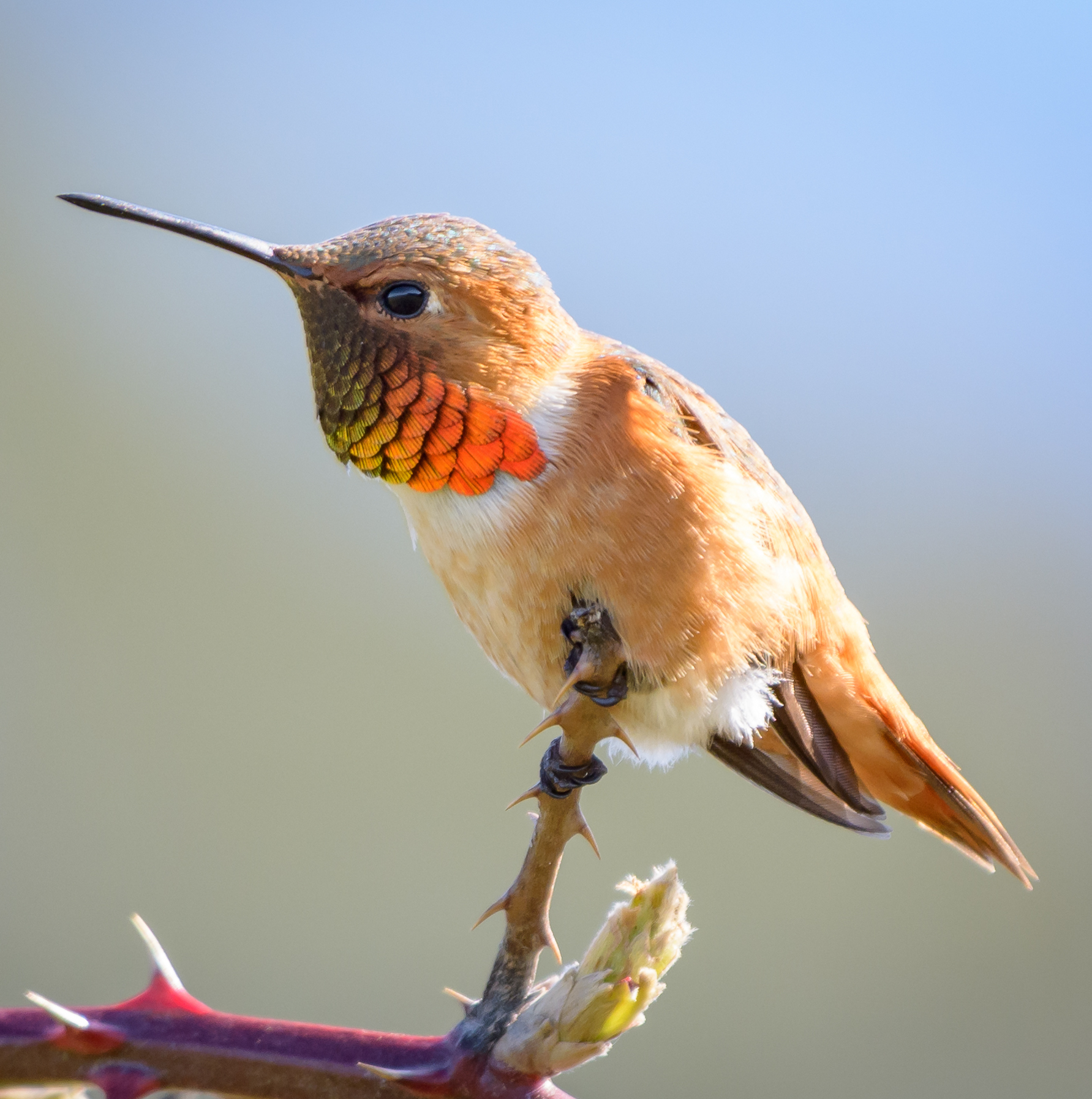
Allen’s Hummingbird
Selasphorus sasin
Order: Apodiformes
Family: Trochilidae
Size: 3.2 – 3.6 in (8-9 cm)
Overview
This small but territorial hummingbird has a medium-short to medium black bill and an extensive rufous plumage. It was named after the Californian bird collector, Charles A. Allen. Allen’s hummingbird has the most restricted breeding ranges of all native North American hummingbirds. Though their habitat has been altered by humans, they’ve adapted well to urban and suburban environments – zipping from feeder to feeder. In their natural environment, they use native plant species such as honeysuckle, bush-monkeyflower, and fuchsia-flowered gooseberry for their nectar needs.
How to Identify
The Allen’s Hummingbird is very difficult to distinguish from the Rufous Hummingbird. In fact, the female and immature males of both species are pretty much indistinguishable. In the adult male, the Allen’s Hummingbird has a green back and rump, but a rufous tail, and the Rufous Hummingbird usually has a rufous back, rump and tail. That’s the easiest way to distinguish the two.
Allen’s Hummingbird Range & Migration Map
The range of Allen’s Hummingbid is one of the smallest and restrictive of all North American Hummingbirds. They’re a common summer resident of northern coastal California and southern Oregon and a year-long resident of southern Californa. During migratory season, can be found in Arizona and even New Mexico.
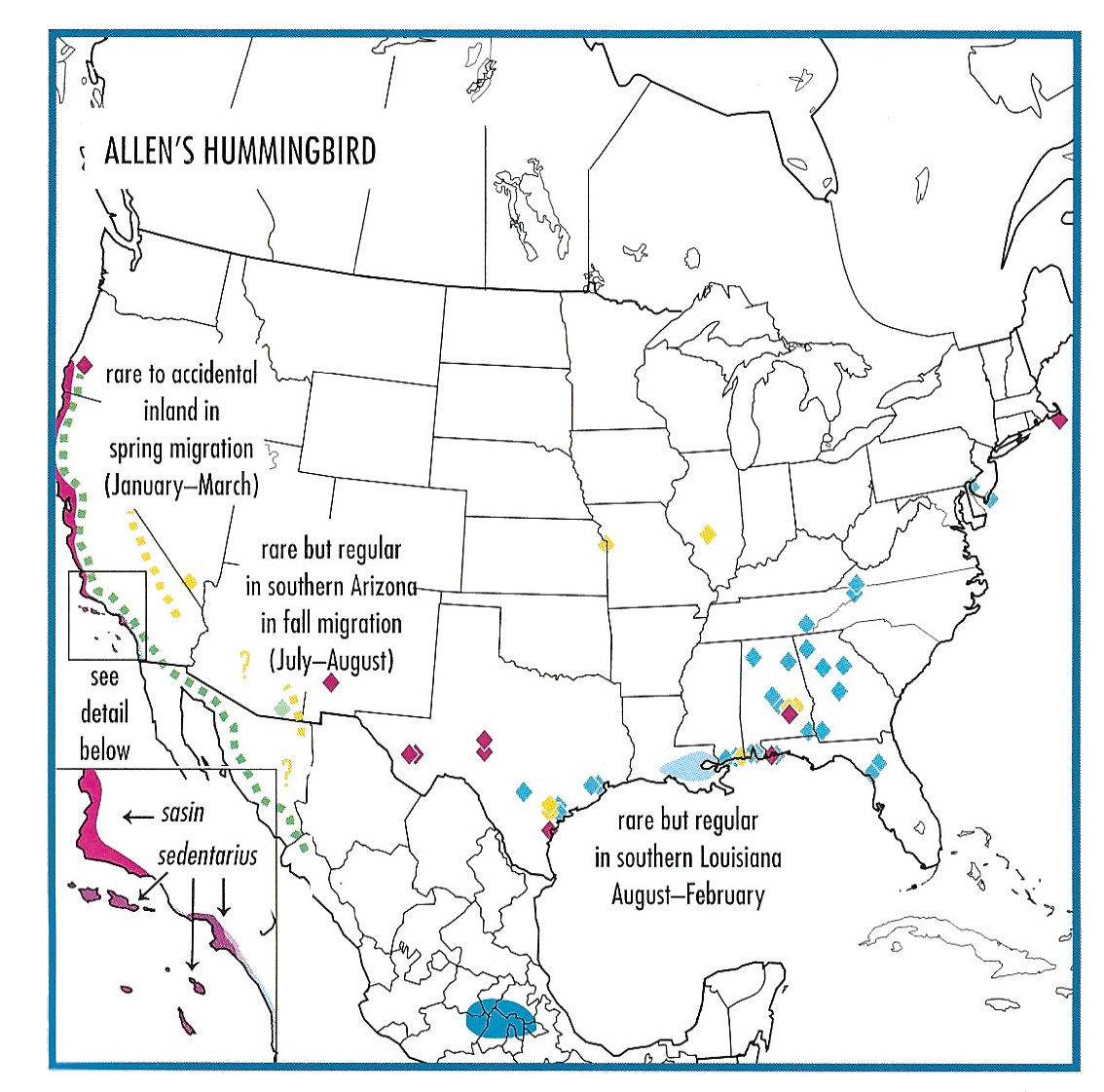
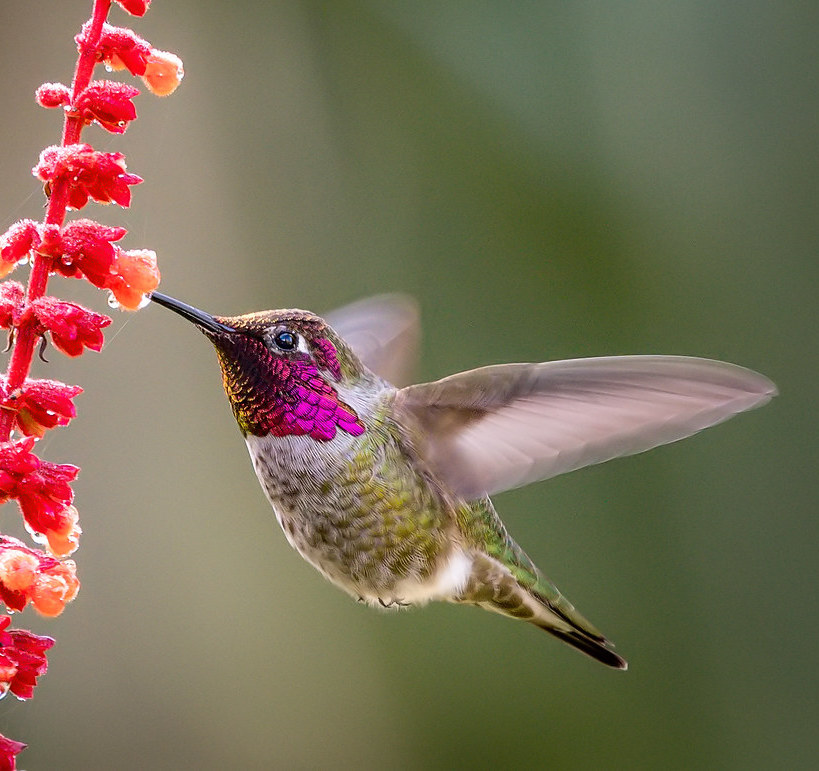
Anna’s Hummingbird
Calypte anna
Order: Apodiformes
Family: Trochilidae
Size: 3.5 – 4in (9-10cm)
Overview
Originally a native to California, the Anna’s Hummingbird is quite adaptable allowing it to expand its range northward and eastward chasing exotic flowers in urban gardens. It’s named in honor of Anna Massena, the Duchess of Rivoli and a generous patron of science. During the winter Anna’s hummingbird has been observed eating insects such as gnats and even eating sand and ashes – likely to provide essential minerals.
How to Identify
Anna’s Hummingbird is a medium-sized hummingbird with a medium sized straight black. bill. The male sports a red gorget. Unlike the Black-Chinned and Costa’s Hummingbird, Anna’s Hummingbird normally holds its tail still while hovering.
Anna’s Hummingbird Range & Migration Map
Anna’s Hummingbird is a common resident in California but has extended its range north towards the western coast of Washington and southeast to southern part of Arizona. It’s a rare winterer of western Texas.
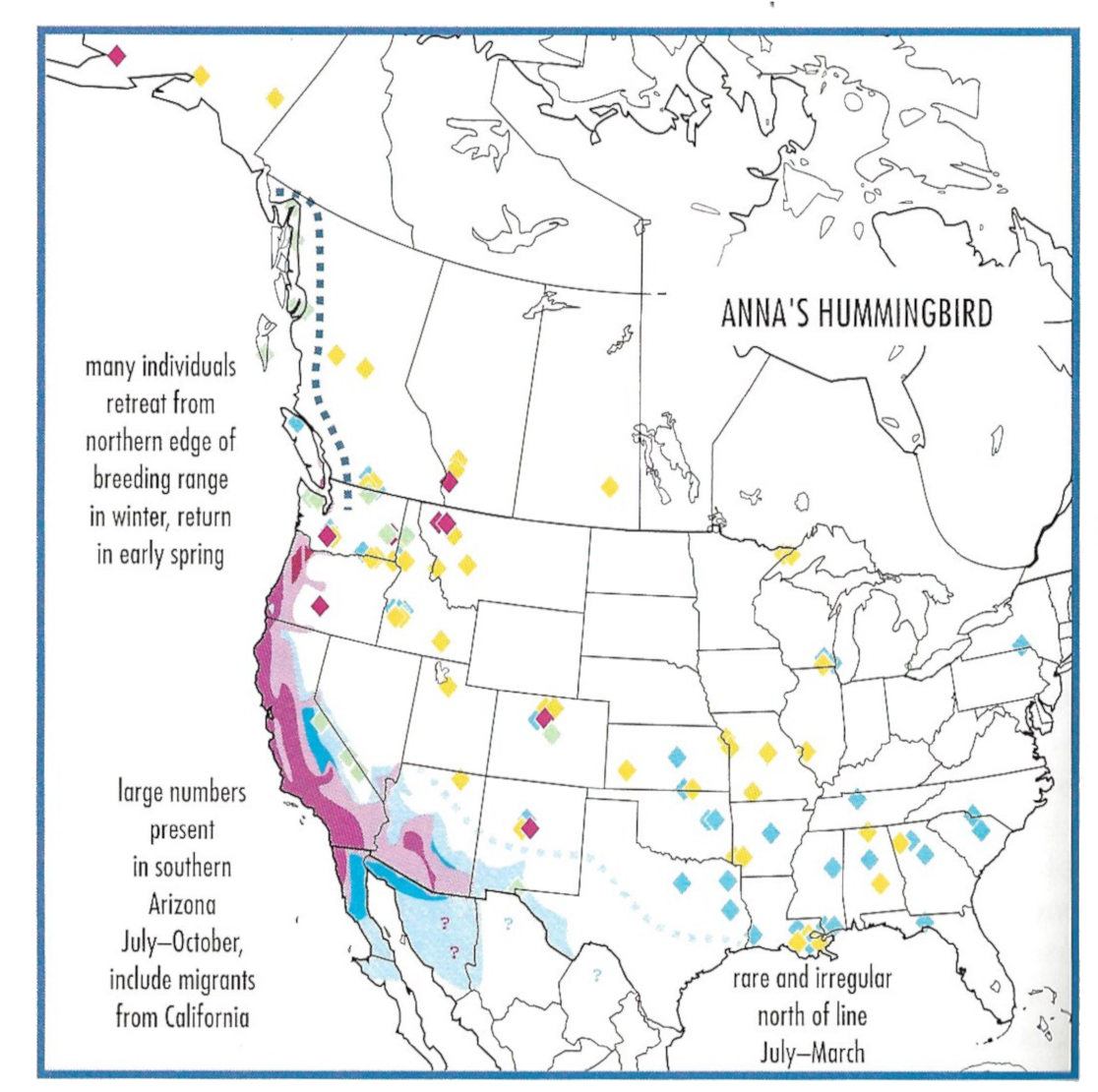
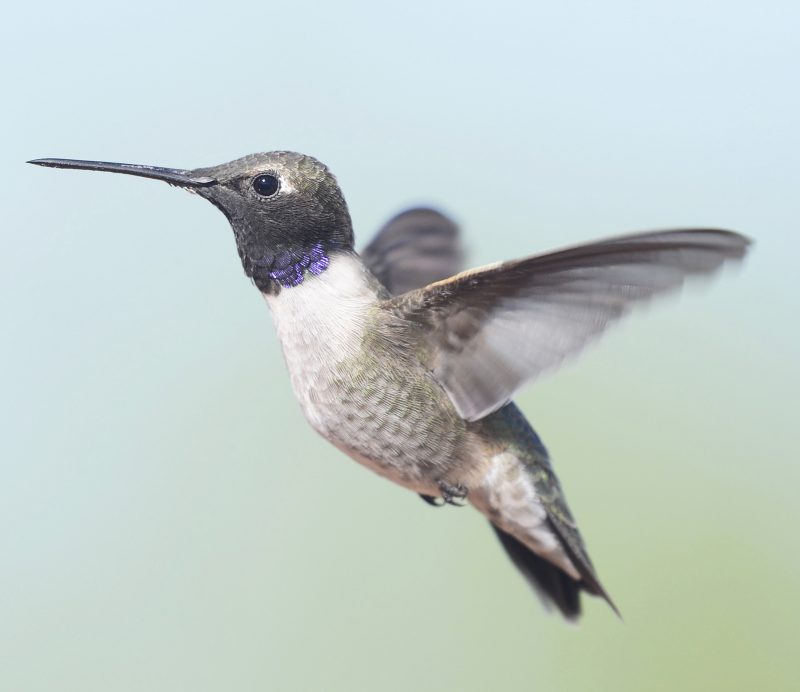
Black-Chinned Hummingbird
Archilochus alexandri
Order: Apodiformes
Family: Trochilidae
Size: 3.25 – 3.75 in (8.5 – 9.5cm)
Overview
The Black-Chinned Hummingbird is the western counterpart of the Ruby-Throated Hummingbird. The species was named in 1846 to honor its discoverer – Dr Alexandre. It can be found in most types of habitats, including backyards, all over the western United States. It pumps its tail almost constantly while in flight and isn’t picky about what plants it takes nectar from.
How to Identify
The Black-Chinned Hummingbird is a small hummingbird with a medium to long decurved bill and a grey crown. It’s gorget is mostly black with a hint of violet in the correct sunlight.
Black-Chinned Hummingbird Range & Migration Map
The small hummingbird breeds in most the western states, going as far east as eastern Texas. Can be found during the winter in the southern states bordering the Gulf of Mexico.
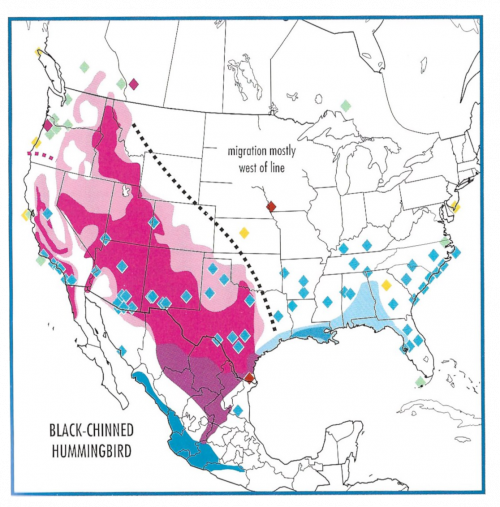
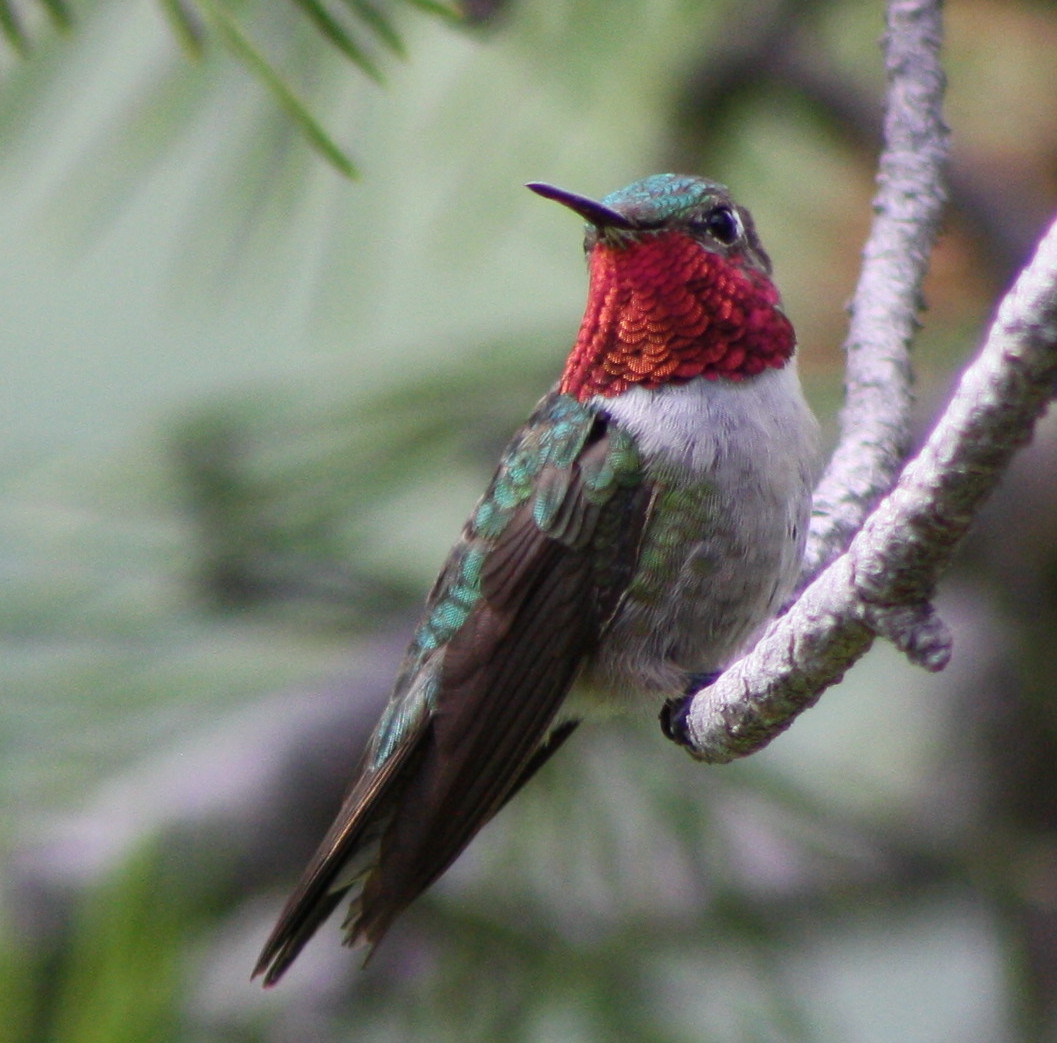
Broad-Tailed Hummingbird
Selasphorus platycercus
Order: Apodiformes
Family: Trochilidae
Size: 3.75 – 4in (9.5 – 11cm)
Overview
This medium-sized hummingbird is one of the most hummingbirds of the Rocky Mountains. Their call, which resembles the ringing of tiny bells, is a common sound during the Rocky Mountain summers. Fun fact, a female Broad-Tailed Hummingbird is the oldest known wild hummingbird in the United States reaching a ripe old age of 12 years.
How to Identify
The Broad-Tailed male hummingbird sports a hot pink gorget which contrasts with a white breast. It’s medium-sized with a a decently long tail and straight black bill. It’s a mild-manned hummingbird that is easily bullied by other hummingbirds.
Broad-Tailed Hummingbird Range & Migration Map
The Broad-Tailed Hummingbird breeds from Wyoming and central Idaho down to Mexico. Winters in Mexico and can rarely be found along the Gulf of Mexico states. It prefers mountain forests and woodlands.
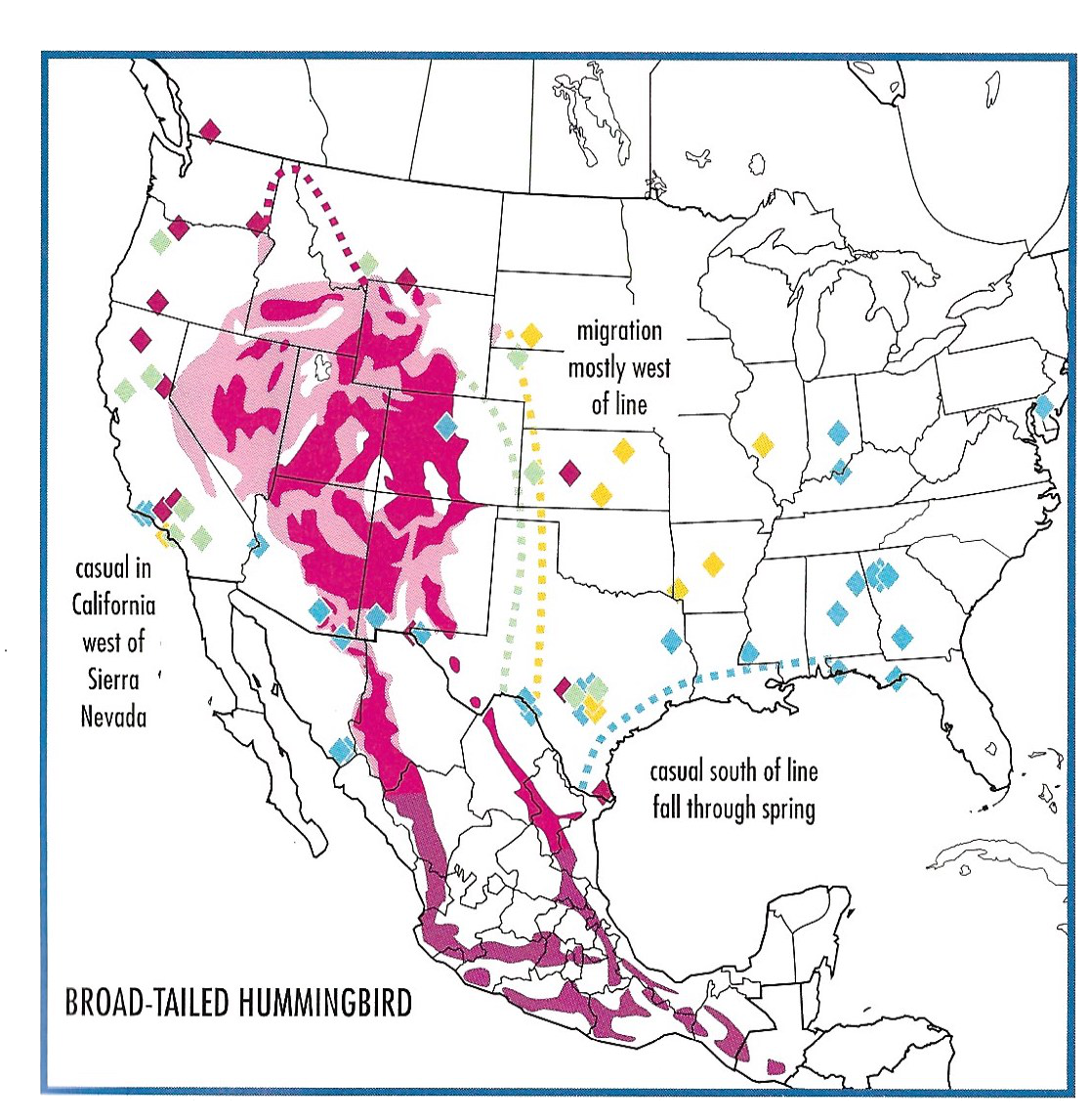
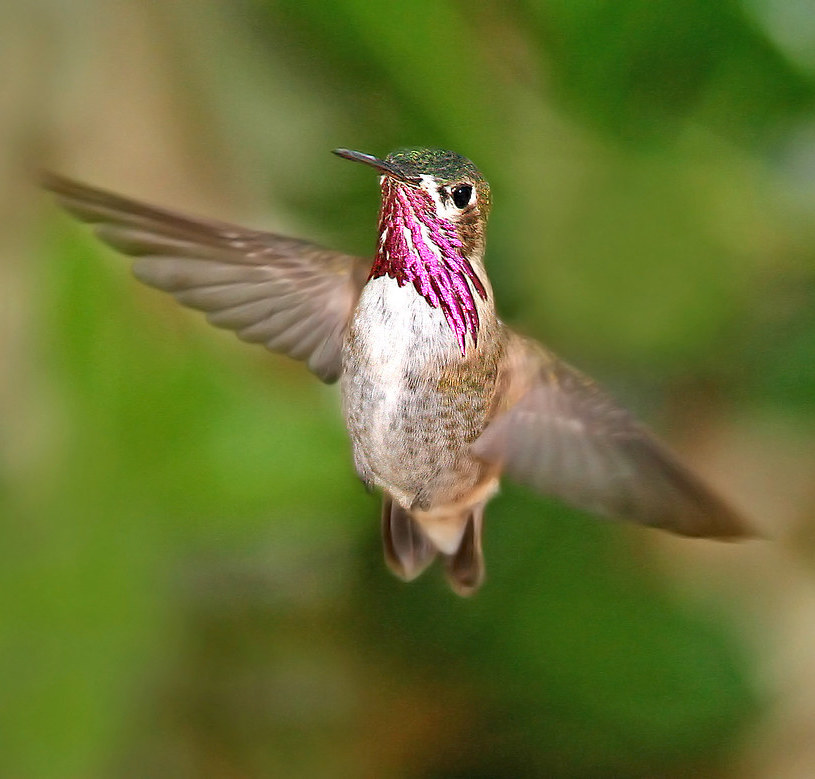
Calliope Hummingbird
Stellula calliope
Order: Apodiformes
Family: Trochilidae
Size: 2.75 – 3.25in (7.5 – 8cm)
Overview
The Calliope Hummingbird is the smallest breeding bird in the United States. In fact, the male weighs less than a penny. The Calliope’s species name is Greek for “beautiful voice” which is rather ironic given that this hummingbird has limited vocal ability. This hummingbird prefers habitats in conifer forests and older growth following forest fires.
How to Identify
The Calliope Hummingbird is a really small bird with a short black bill and short tail. The male sports a red to purple gorget with a white background. It’s very small size should distinguish it from other hummingbirds rather easily.
Calliope Hummingbird Range & Migration Map
The Calliope Hummingbird breeds in the northwestern states starting from northern California. During the winters, it can be found in the states along the Gulf of Mexico. During migration season, they can be found following both the Rocky Mountain and Pacific ranges.
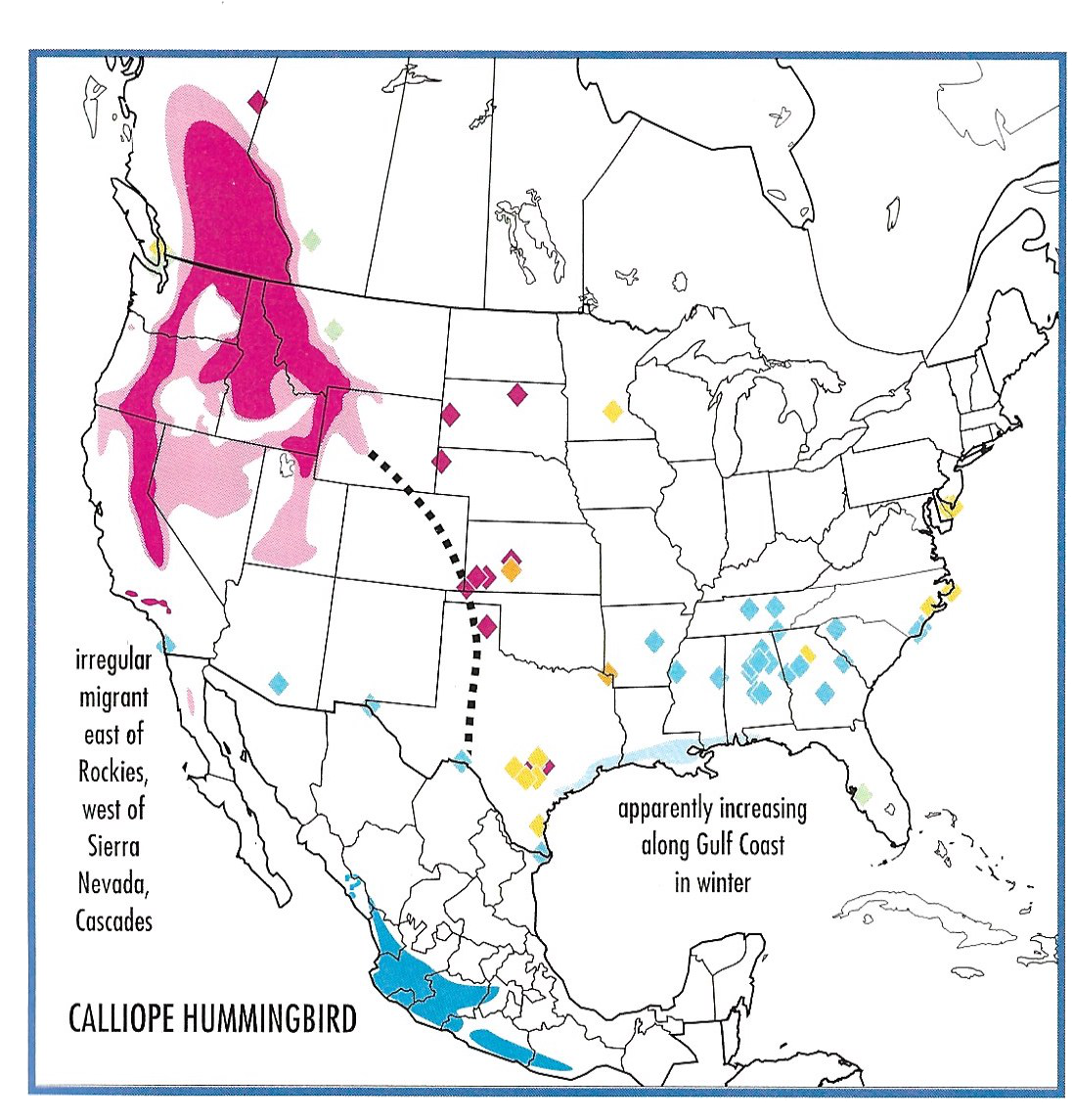
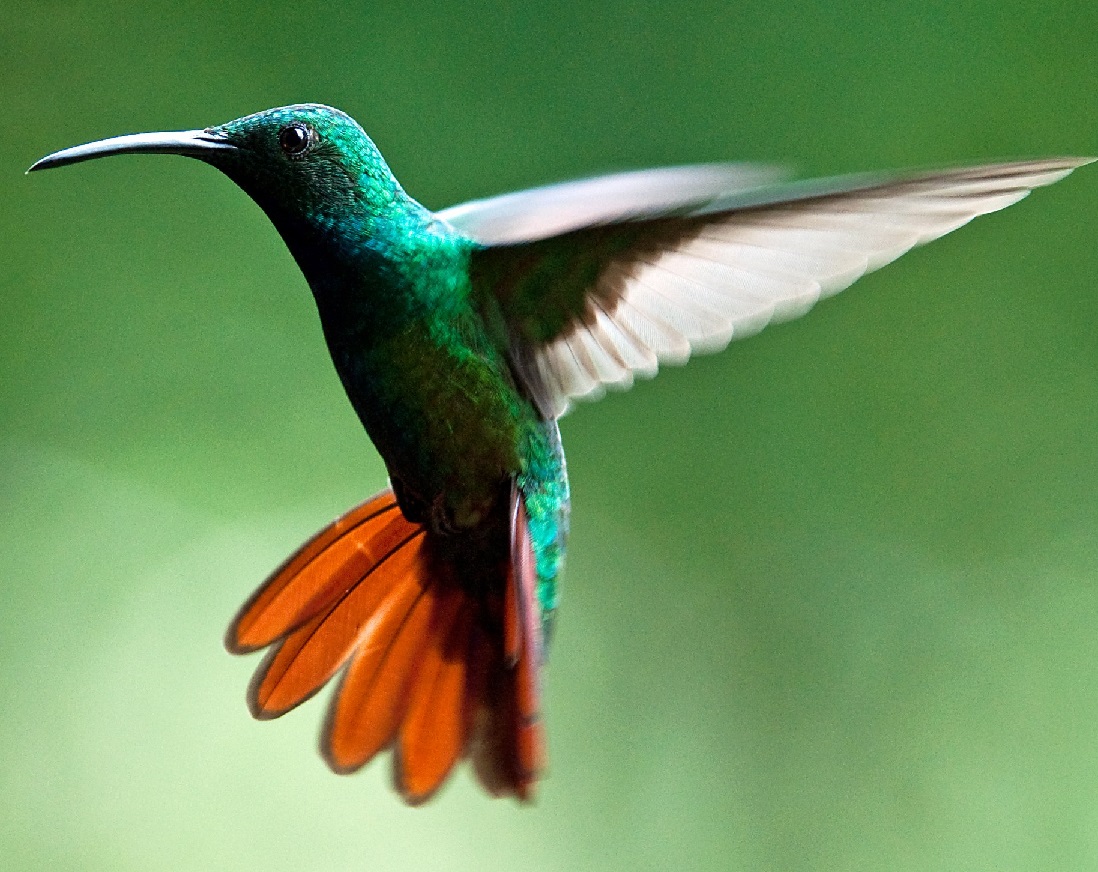
Green-Breasted Mango Hummingbird
Anthracothorax prevostii
Order: Apodiformes
Family: Trochilidae
Size: 4.2 – 4.7in (11 – 12cm)
Overview
This species of hummingbird is a vagrant traveling into the US from Mexico, and is usually a friendly visitor of wide-open spaces. They prefer traveling into backyards for easy feeding compared to deeper forests and wooded areas. These hummingbirds are particularly keen on snapping insects out of the air as they fly past.
How to Identify
A larger species than many, the Green-breasted mango is dark green to the plumage and has a bluish tint to the stomach. It’s also noted for having a large, curved bill. You’ll normally be able to tell a male by its red tail, while female tails are much darker. Females also have spots of white scattered across their bodies.
Green-Breasted Mango Hummingbird Range & Migration Map
Though rarer than native species, this hummingbird is a common vagrant to spot across Texas, though it’s been seen as far across as North Carolina, and has even been spotted out in Wisconsin and Georgia. Being a tropical bird, you are more likely to find it nesting down towards Central and South America.
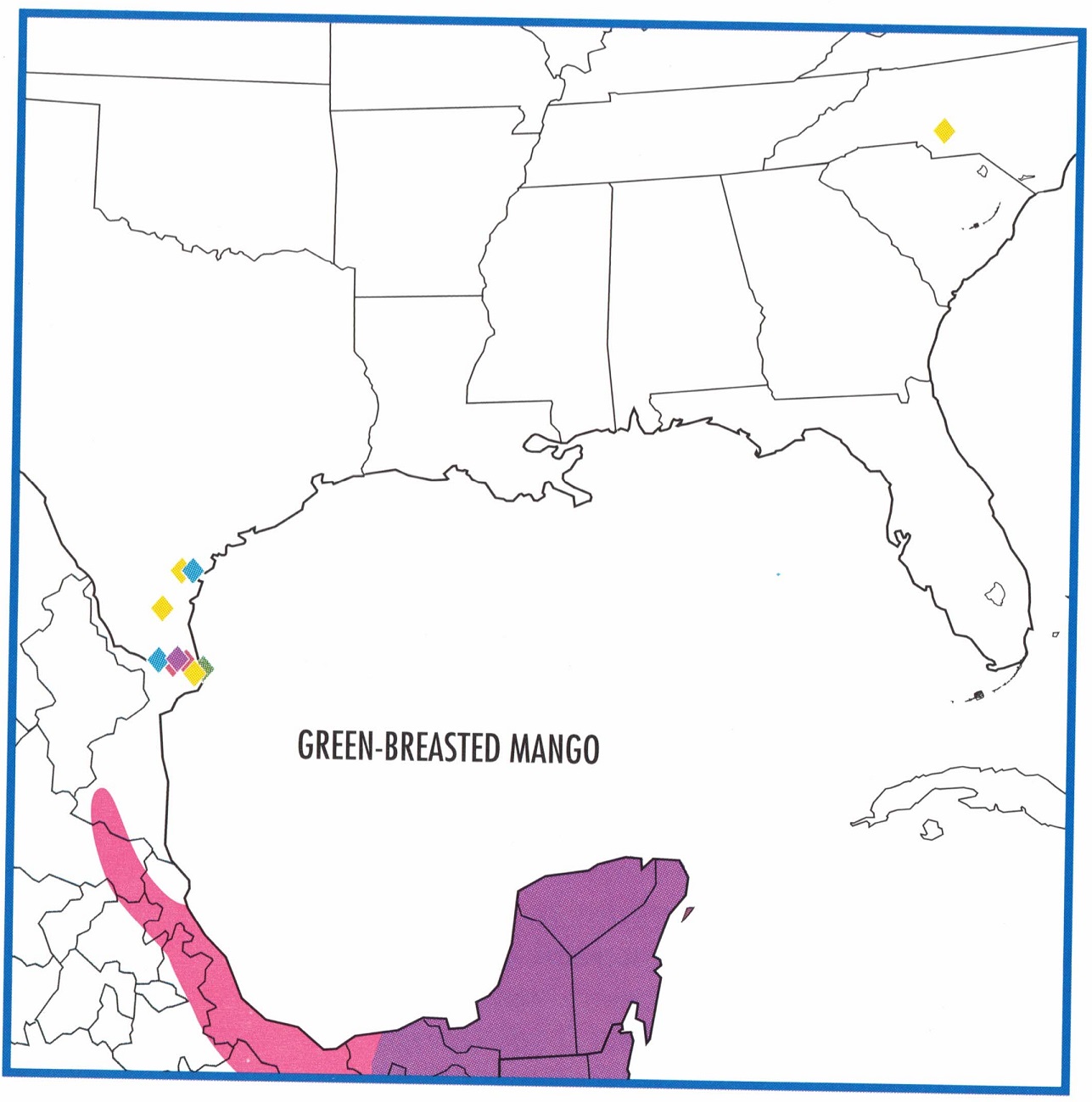
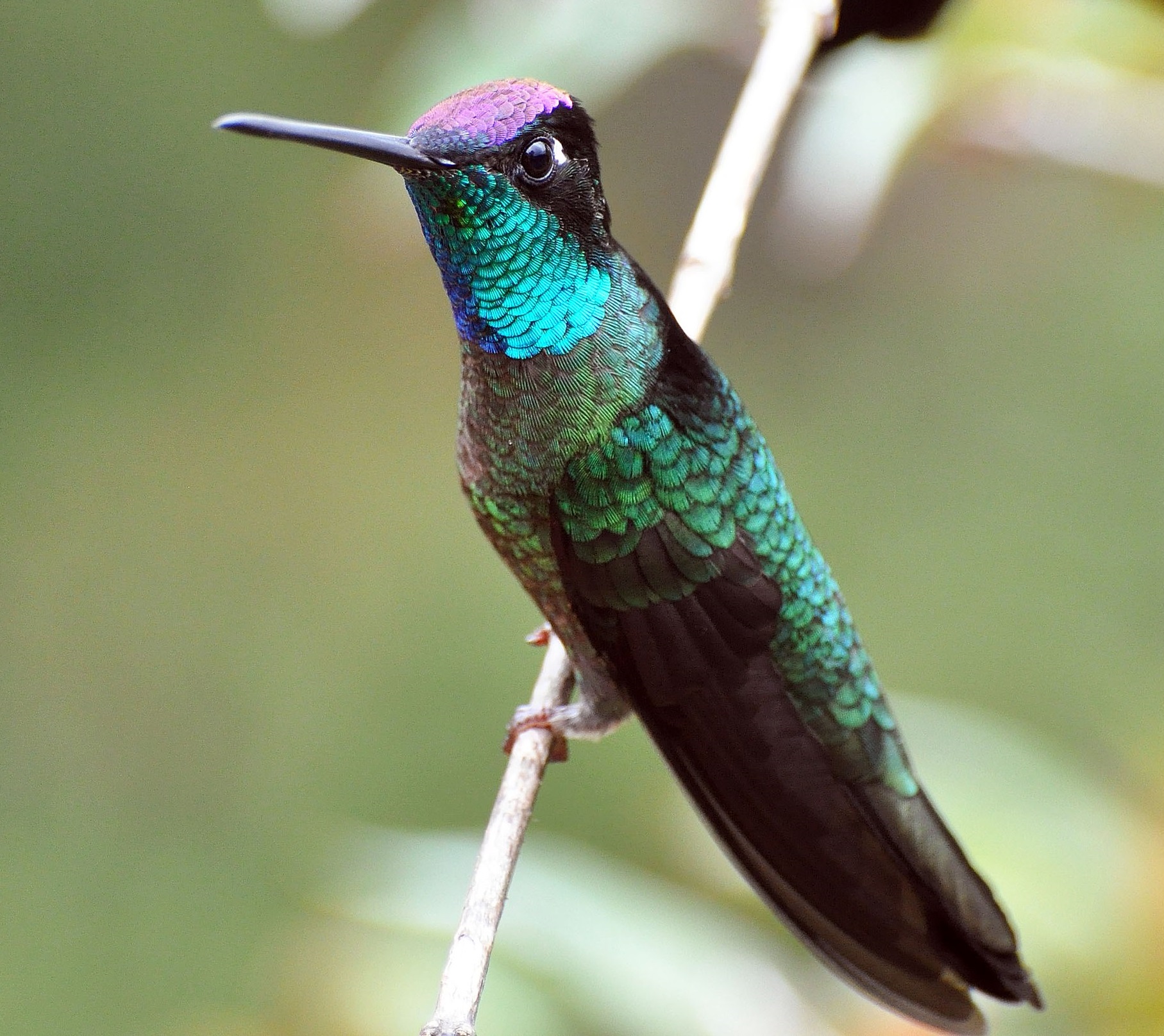
Rivoli’s Hummingbird
Eugenes fulgens
Order: Apodiformes
Family: Trochilidae
Size: 4.3 – 5.5in (11 – 14cm)
Overview
Like Anna’s hummingbird, Rivoli’s hummingbird is also named after a member of the Rivoli – specifically, the Duke of Rivoli, Anna’s husband. This species used to be called the Magnificent Hummingbird, but was recently renamed to distinguish itself from another species that has a blue gorget as opposed to the purple one that Rivoli’s hummingbird has. This particular avian is well-loved for its stunning colors in green and purple, and for its long body! It has one of the longest bills in the hummingbird species, and its heart rate can reach a blistering pace of 1,200 bpm!
How to Identify
Rivoli’s hummingbirds are wildly colored in waves of green, blue and purple, with touches of yellow. They are fairly large as hummingbird species go, and they are easy to spot as they have quite long, tall statures compared to others that are native in the US!
Rivoli’s Hummingbird Range & Migration Map
Rivoli’s hummingbirds breed primarily in the mountain ranges of western Texas, southeastern Arizona, and south-central New Mexico. The males are highly nomadic and banded birds have traveled hundreds of miles in a season. Sightings of this species can be seen in Colorado (May to October), Alabama (September to February), Arkansas (July), California (April), Georgia (winter), Minnesota (July), Nevada (June), Utah (July), Wyoming (June to July).
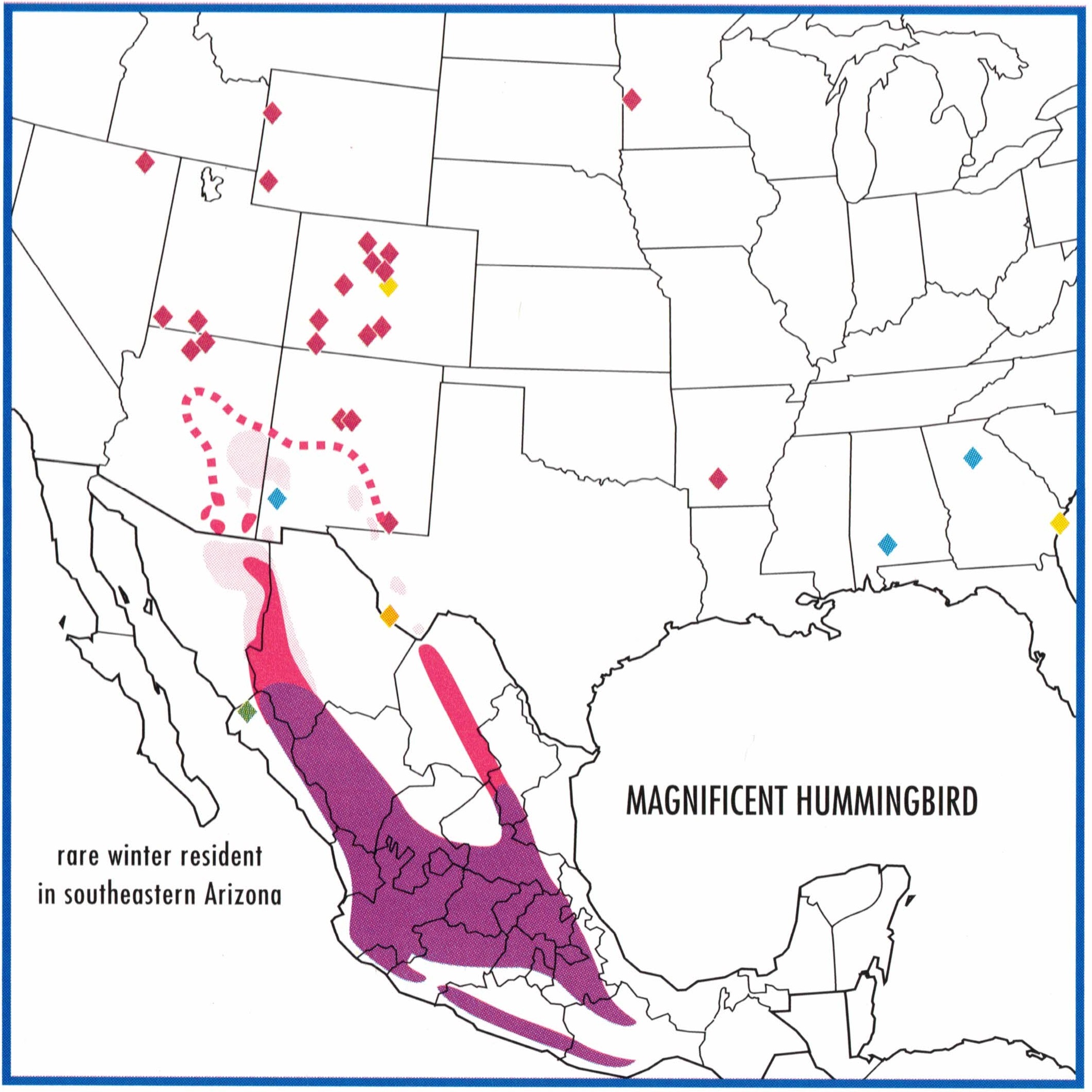
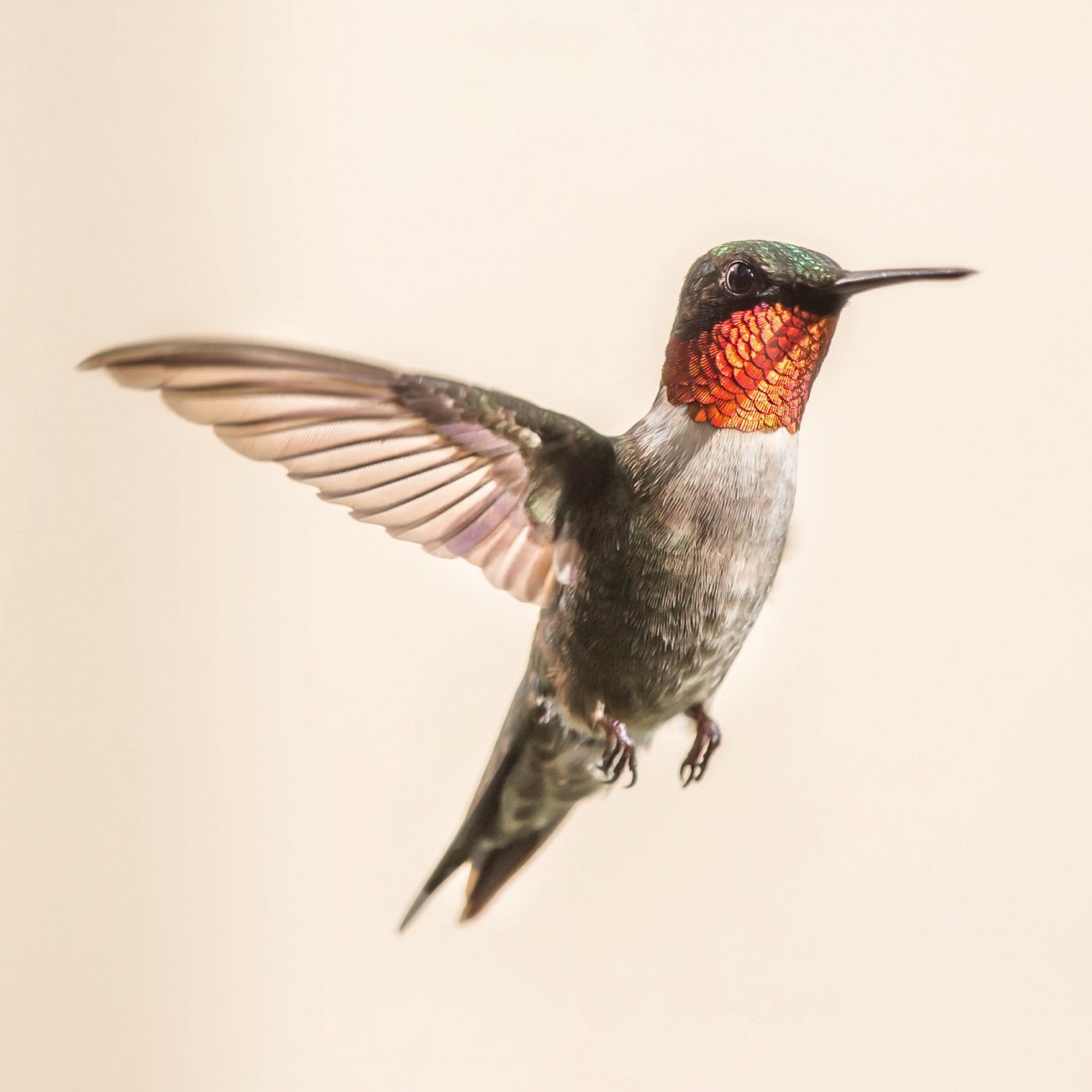
Ruby-Throated Hummingbird
Archilochus colubris
Order: Apodiformes
Family: Trochilidae
Size: 3.25 – 3.75 in (8.5 – 9.5cm)
Overview
The ruby-throated hummingbird is one of the most commonly found hummingbirds of the United States. In fact, it’s the only one that breeds east of the Mississippi River. To reach these eastern breeding grounds, the Ruby-Throated Hummingbird takes a perilous route of flying over 500 miles non-stop over the Gulf of Mexico.
How to Identify
This hummingbird is on the smaller side. The male sports a handsome scarlet gorget and a black chin strap which distinguishes it from the Anna’s and Broad-Tailed hummingbirds.
Ruby-Throated Hummingbird Range & Migration Map
The Ruby-Throated hummingbird breeds in eastern United States and prefers hardwood, pine and mixed forests starting in the spring and retreats to Mexico in the winter.
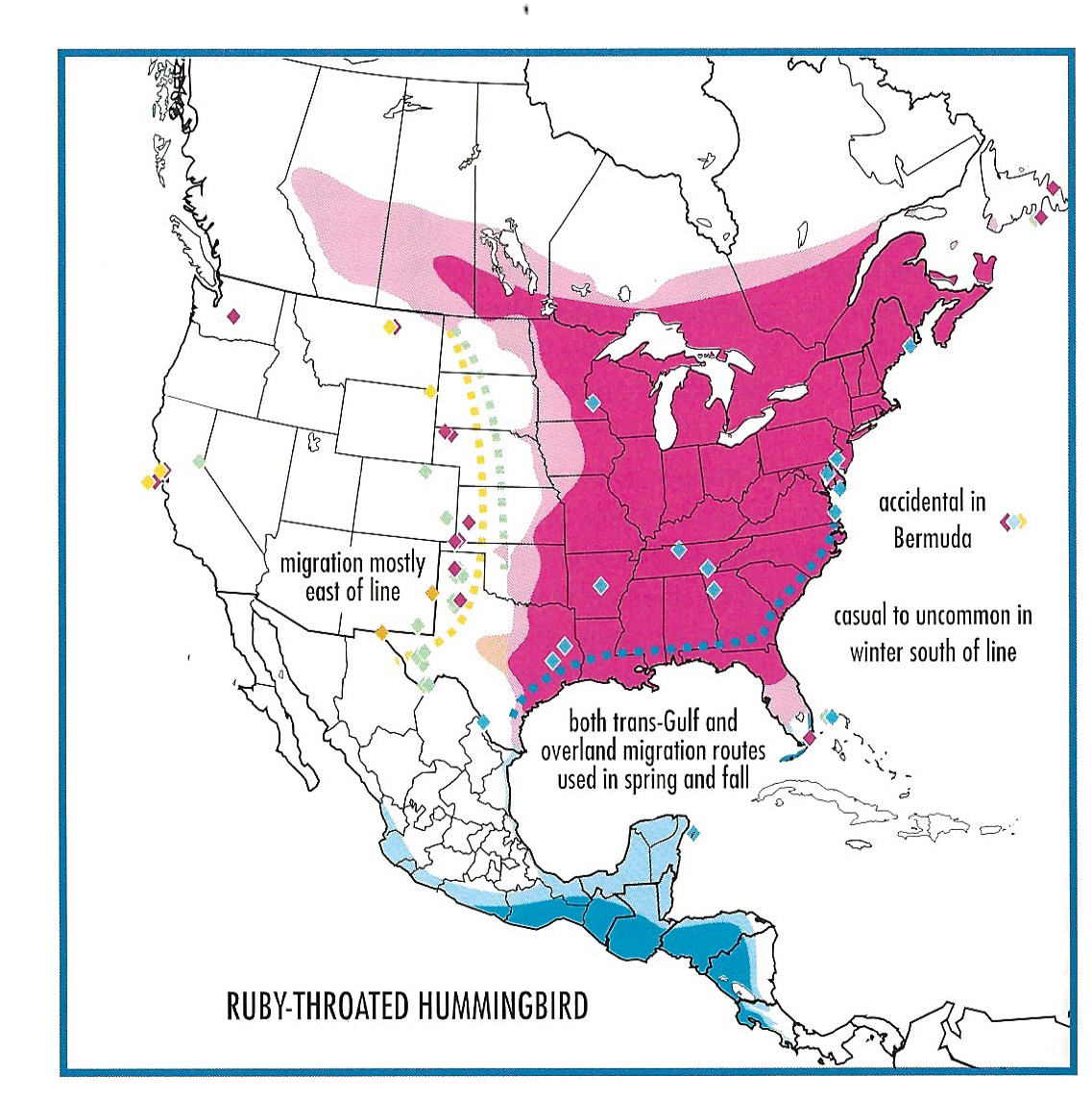
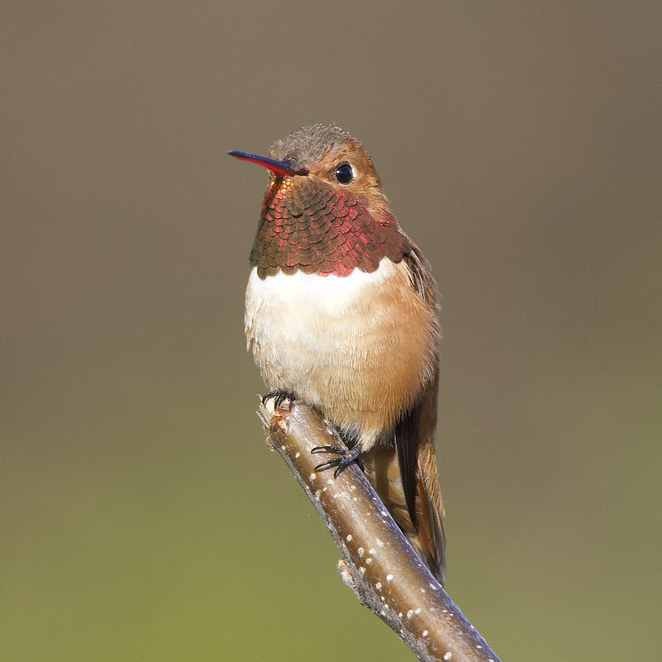
Rufous Hummingbird
Selasphorus rufus
Order: Apodiformes
Family: Trochilidae
Size: 3.5 – 4in (9 – 10cm)
Overview
The Rufous Hummingbird breeds farther north than any other hummingbird in the United States. It’s an aggressive species which makes it an unwelcome guest among hummingbird feeders. This hummingbird is an important part of the Pacific Northwest ecosystem, acting as a pollinator where the insects are at a disadvantage due to their cold-bloodedness.
How to Identify
The most distinguishing feature of the Rufous Hummingbird is the male’s rufous gorget that’s hard to miss. It’s a relatively small hummingbird with a short black bill. With the rufous plumage and aggressive behaviour, you’ll have no problem identifying male Rufous Hummingbirds.
Rufous Hummingbird Range & Migration Map
The Rufous Hummingbird breeds from the southeastern tip of Alaska down to the northern most parts of California, going as far east as Montana. During the winter, it migrates down to the Gulf of Mexico states.
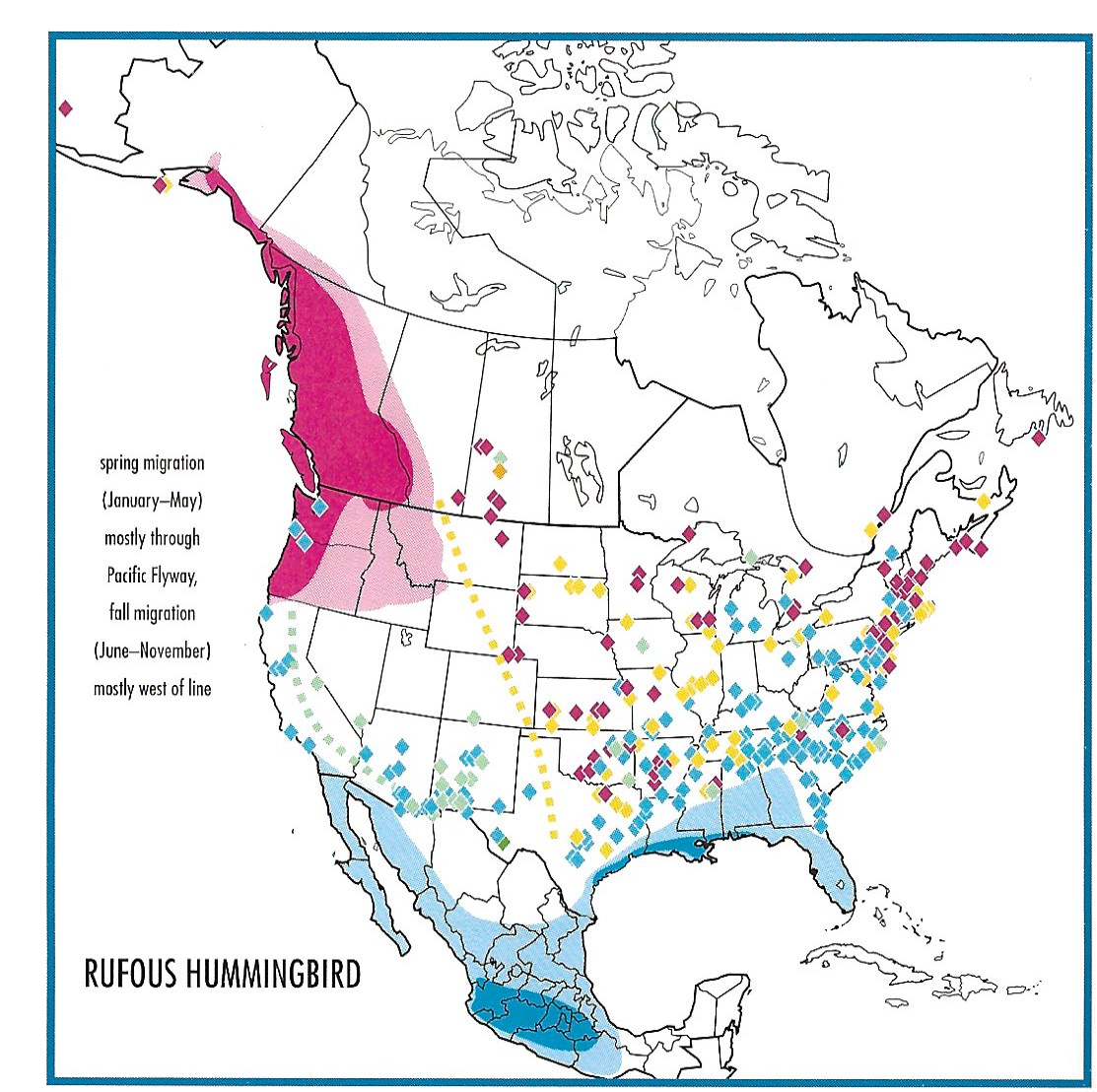
How to Attract Georgia Hummingbirds to Your Yard
Want to see more hummingbirds in your backyard?
We have all the information you need on our site to help you do that. First, we recommend you read our guide on how to attract hummingbirds to your yard. That’ll give you the basics of what’s required to attract hummingbirds.
Then, we’d recommend reading our buyer’s guide on choosing the best hummingbird feeder. Setting up a hummingbird feeder or two is the best way to guarantee that hummingbirds will visit your yard.
There are a bunch of other ways to attract hummingbirds such as getting a bird bath and planting native flowers that attract hummingbirds.
All State Hummingbirds
Want to see what hummingbirds species are found in other states? Here’s our complete list of hummingbirds found in each state:

A black chinned hummer has been visiting my flowers and the neighbors feeders this week. Adairsville, GA
So, is the Ruby throat the only species I will see in Rome GA and most of the Eastern U S?
We believe there is an Allen’s hummingbird visiting here about a month or so. Definitely NOT one of the ruby throated hummingbird. Appears yellow chested. Having trouble getting a good view. 2025 Morgan road near Holly Springs GA
We have dozens of hummingbirds each year in lower Harris County Georgia. They are almost exclusively Black Chinned hummers. Some years a few ruby throated hummers visit us. One website said the black chinned is rare in Georgia. We have been here 14 years and the black chinned guys never fail to visit.
I have had hummingbird feeders out for two weeks and I watched a yellow throated hummingbird today in my front yard and I was thrilled to see it. I live in Cartersville, Ga and my feeders are outside of my living room windows so I can keep an eye on them. I got to see a male do his courting dance for a female last year and it was beautiful.
I have two Blacked chinned at my feeder pretty much all day. Cleveland Ga.